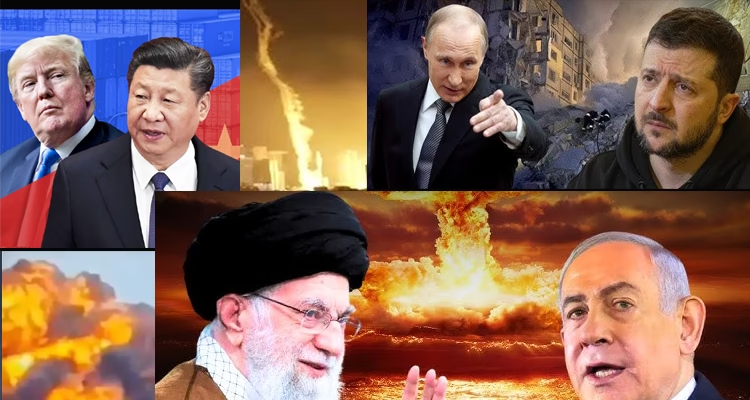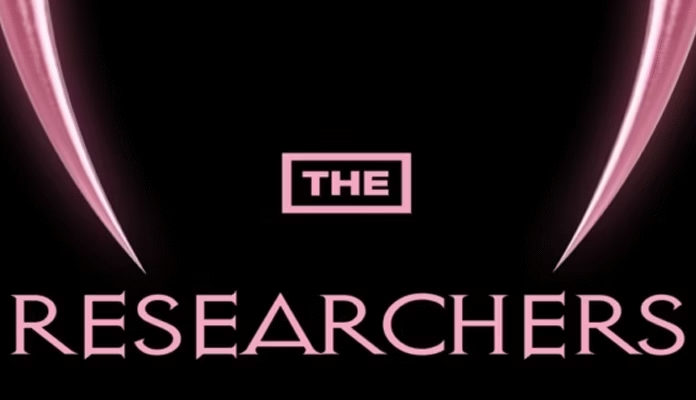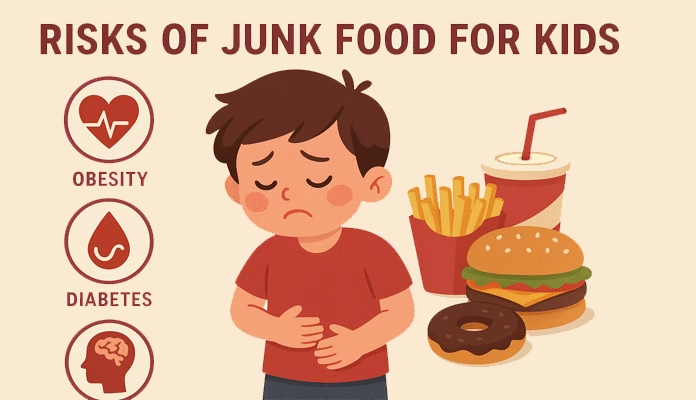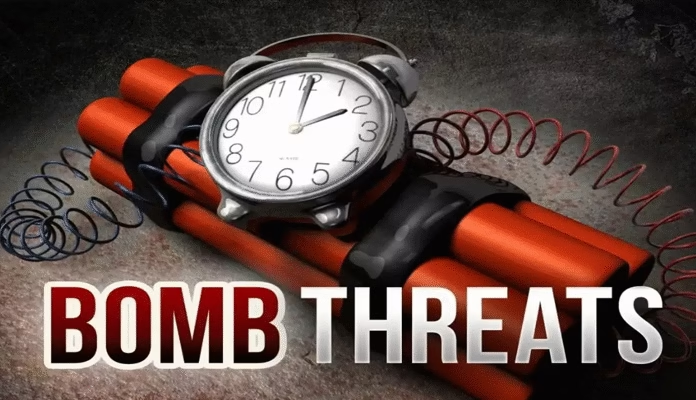
 — Ashis Sinha
— Ashis Sinha
As we move through mid-2025, the world stands rattled by a series of converging crises that are no longer just regional skirmishes—they are redefining geopolitics, disrupting economies, and shaking global security structures.
From aerial warfare in the Middle East to a hot conflict on Europe’s eastern front, and a full-blown trade war erupting from Washington, three distinct but interconnected flashpoints are pushing humanity toward a dangerously unpredictable future.
1. Operation Rising Lion: Israel-Iran Firestorm Ignites the Middle East Powder Keg
In early June 2025, Israel launched Operation Rising Lion, a high-intensity aerial campaign targeting Iran’s nuclear infrastructure and senior military leadership. Strikes reached deep into Iranian territory — hitting fortified uranium enrichment facilities at Natanz, missile bases, and Islamic Revolutionary Guard Corps (IRGC) command centers.
Iran’s retaliation was swift and aggressive. Over 150 ballistic missiles and 100+ armed drones were fired at Israeli military installations and urban centers. Some penetrated Israel’s vaunted Iron Dome, causing casualties and damage in Tel Aviv, Haifa, and southern regions.
Analysts describe Israel’s strategy as a calculated attempt to “cripple Iran’s nuclear timeline and fracture its regional influence.” However, the move has also heightened the risk that Tehran may accelerate its nuclear program rather than abandon it.
Crude oil prices spiked immediately, while international concern surged over the possibility of a larger regional war involving Hezbollah, U.S. bases in the Gulf, and possibly NATO responses.
2. The Kursk Gambit: Ukraine’s Cross-Border Blitz Into Russia
While the Middle East was on fire, another front erupted in Eastern Europe. In August 2024, Ukraine executed its boldest military maneuver yet — a direct cross-border offensive into Russia’s Kursk region.
Breaking through Russian border defenses with drone swarms and artillery-backed infantry units, Ukrainian forces captured temporary positions and disrupted key logistics nodes. For several weeks, it appeared Kyiv had changed the momentum of the war.
However, by early 2025, Russia retaliated with overwhelming force — deploying airpower, cyberwarfare units, and reportedly using North Korean weapons systems supplied via covert supply chains. Ukrainian troops withdrew in a tactical retreat, but their campaign left a psychological and strategic imprint.
This offensive marks a new phase in Ukraine’s military doctrine: aggressive disruption, aimed at forcing Moscow back to negotiations. But Russian President Vladimir Putin has vowed a “total reclaiming of sovereign Russian lands,” signaling a long, grinding conflict still ahead.
Meanwhile, global grain supply chains and natural gas exports continue to suffer, impacting food security and energy prices across Africa, Asia, and Europe.
3. Trump’s Trade Blitz 2.0: The Return of Economic Nationalism
Back in the United States, a different kind of warfront has emerged — this one on the economic battlefield. In a dramatic revival of his populist protectionism, President Donald Trump, now in his second term after winning the 2024 election, has reignited a sweeping tariff war targeting key global trade partners.
In early 2025, the Trump administration imposed new or expanded tariffs on Chinese electronics, Canadian and Mexican metals, and a range of European Union goods including vehicles, industrial machinery, and home appliances.
Dubbed “Trade Blitz 2.0,” this aggressive economic maneuver was intended to shield American industries and revive domestic manufacturing. Initially, the U.S. economy remained steady — employment held firm and investor sentiment was stable.
But within months, inflation surged, prices rose across consumer sectors, and retaliatory tariffs from affected countries began hitting American exporters. China, in particular, responded with duties on U.S. agricultural goods, aircraft components, and semiconductors.
Economists now warn of a 1% drop in U.S. GDP if the standoff continues — with long-term effects (may echo till 2034) on global trade flows, supply chains, and developing economies that rely on export markets. The IMF has echoed those concerns, predicting that these economic hostilities could delay the post-COVID global recovery by up to 18 months.
Global Shockwaves: Three Wars, One Chain Reaction
These aren’t disconnected conflicts. Each is feeding into the other — forming a tri-theater storm of kinetic, territorial, and economic warfare:
-
Middle East tensions have caused oil prices to soar, straining already inflation-hit economies worldwide.
-
Eastern Europe’s conflict is disrupting food and energy supplies, particularly grain and natural gas.
-
The U.S. trade war is weakening global investor confidence and distorting trade balances.
Most alarmingly, each power — whether Israel, Ukraine, or Trump’s America — is acting from a place of aggression-as-leverage. They are reshaping the international order by force, not consensus.
Conclusion: A World on Edge
What we are witnessing in 2025 is not just the return of great-power rivalry — it’s the simultaneous unraveling of the post-WWII global order.
- Whether Israel’s strikes will prevent a nuclear breakout or provoke one…
- Whether Ukraine’s bold gambit will push Russia to peace or entrench its will to fight…
- Whether Trump’s economic war will rejuvenate American industry or plunge the world into a recession…
The stakes have never been higher.
This is a stress test for global diplomacy, multilateral institutions, and the very idea of international cooperation. Only strategic restraint, diplomatic courage, and global unity can now prevent these three fires from becoming one uncontrollable inferno.



